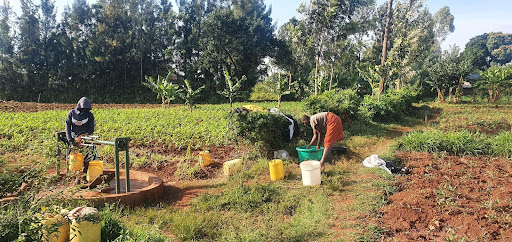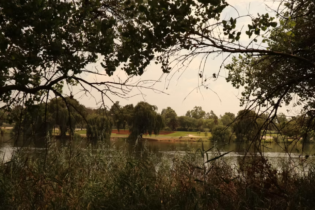In the East Ward of Kabondo village in Kenya, the scarcity of clean and safe drinking water is not merely a daily inconvenience, but a full-on crisis that robs the community of its future.
While the non-access to water affects everyone, the burden is most heavily placed onto the shoulders of the women and girls of the community.
Every morning, as the sun rises groups of young girls leave their homes before daybreak, setting off on a long, often unsafe journey to find water. Carrying jerry cans, these girls walk for miles to the nearest water source, often an open well or a distant stream. The search for water consumes their entire morning, leaving them exhausted and late for school or, in many cases, unable to attend at all.Girls missing out on education
In Got-Rateng Primary School, a nearby primary school, absenteeism among girls has become an all-too-common occurrence. Instead of sitting in classrooms, they spend countless hours trekking to distant wells, missing valuable school time. This daily chore not only affects their education but also their prospects for the future.“I want to be a nurse,” says Mary, a 14-year-old girl from the area, “but most days, I’m too tired to focus in class because I’ve already walked for hours just to fetch water.”The impact is felt most strongly during the dry season when water sources dry up, forcing the community to dig deeper into dangerous wells or search farther afield. The school’s head teacher notes, “Girls here often fall behind in their studies. They want to learn, but the demand to fetch water is relentless.”
Health risks and accidents
 The dangers of water scarcity in Kabondo East are not limited to missed school days. The poorly constructed wells and open water sources pose serious health risks. Many wells in the area are shallow, contaminated with bacteria and are uncovered contributing to the higher risk of spreading contaminations. Waterborne diseases such as cholera, typhoid, and dysentery are rampant. “We’ve lost too many lives to diseases that could have been prevented if only we had clean water,” laments Joyce, a mother of five who has seen her children fall ill repeatedly due to unsafe drinking water.
There have also been serious accidents that haunt the community. Hand-dug wells, often used in desperation, collapse unexpectedly. In 2023, a young girl lost her life when she fell into a dilapidated well while fetching water. The tragedy sent shockwaves through Kabondo East but little was done to change the reality that many families face: using dangerous wells is often their only option.
For the women of Kabondo East, fetching water is a daily struggle that takes a toll on their bodies and their time. With no access to clean, nearby water, they are forced to walk long distances under the scorching sun, balancing heavy jerry cans on their heads. The task is backbreaking, leaving many women with chronic pain and long-term health issues.
And yet, they have no choice. Water is essential for cooking, cleaning and caring for their families.
The dangers of water scarcity in Kabondo East are not limited to missed school days. The poorly constructed wells and open water sources pose serious health risks. Many wells in the area are shallow, contaminated with bacteria and are uncovered contributing to the higher risk of spreading contaminations. Waterborne diseases such as cholera, typhoid, and dysentery are rampant. “We’ve lost too many lives to diseases that could have been prevented if only we had clean water,” laments Joyce, a mother of five who has seen her children fall ill repeatedly due to unsafe drinking water.
There have also been serious accidents that haunt the community. Hand-dug wells, often used in desperation, collapse unexpectedly. In 2023, a young girl lost her life when she fell into a dilapidated well while fetching water. The tragedy sent shockwaves through Kabondo East but little was done to change the reality that many families face: using dangerous wells is often their only option.
For the women of Kabondo East, fetching water is a daily struggle that takes a toll on their bodies and their time. With no access to clean, nearby water, they are forced to walk long distances under the scorching sun, balancing heavy jerry cans on their heads. The task is backbreaking, leaving many women with chronic pain and long-term health issues.
And yet, they have no choice. Water is essential for cooking, cleaning and caring for their families.
“I wake up every day at 5 a.m.,” says Eunice, a 37-year-old mother, “and I walk for hours to fetch water. By the time I return, I am too tired to do anything else, but there’s always more work waiting.”
Social and Economic Consequences

Children wade into a stream to fetch water, unaware of the dangers of contamination. In Kabondo East, the lack of clean water forces many to rely on unsafe sources, putting their health at risk.
A Call for Change
The need for clean, reliable water in Kabondo East is beyond urgent. It’s not just about convenience but it’s about health, education and safety. The community needs wells that are properly constructed, deep enough to reach safe water tables and protected from contamination.
Francis Ogola Ndonga, director of Lifewater Community Kenya








